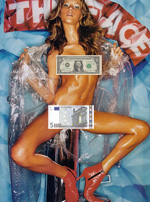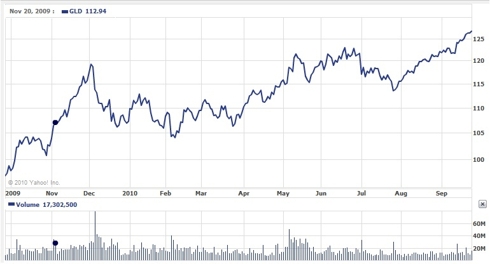Submitted by JM
Revolutions happen when broken parts of existing structures reassemble themselves in novel ways. Today’s Japanese carry trade will become something completely new: currency jettison.
This coming Yen carry trade is going to fundamentally change Japan. Next time, Miho Maejima won’t be hungry for yield. She has no yen for it: the carry trade will be driven by exchange rate volatility hedging. She’ll handcuff the government to the bedpost and go for full-on dollarization. When she does, shorting yen is the best trick on the planet.
Dollarization to control currency volatility happens a lot. It is not even a radically new event in Japan, but it will go viral and mutate into a radically new species of carry trade. The utter abandonment of the yen to de-risk will end any return crash. And the Japanese semi-democracy (that designation applies to all nations, not just Japan) must allow it to happen. Aging pensioners are both creditors and voters: the only possible adjustment they can make to the coming sovereign crisis is by getting entirely out of yen.
Only if the aging samurai in charge let all that is parasitic in the financial system crumble will dollarization be averted. Either way, the Gordian debt-knot will find resolution. Creditors will take it hard.
Sort of. Spurned creditors get their pound of flesh. And this is why in the end the dollarization of Japan will not be a short-term affair. Not only will deposits be dollarized. Liabilities and claims will be dollarized too. Monetary policy itself will be reinitialized to dollars. The idiot-elite in charge will ultimately want to get some turf back, but the handcuffs won’t be coming off for a long time.
I don’t need to tell you that this has import far beyond Japanese shores. Japan won’t be the only country to dollarize, and to possibly abuse a term, the world dynamical system will be coupled with even greater synchronicity.
Japan won’t be the only country to dollarize. Get ready…the dollar love you are going to feast your eyes on will be the next Black Swan in and of itself.
I. Translating Dollarization into Other Idioms
Dollarization is nothing new under the sun: just an extreme from of exchange-rate pegging that strips a state of its monetary authority but leaves unchanged its fiscal authority. It’s like a gold standard only pragmatic. The underlying is based on multi-dimensional faith, not a pricey rock.
At its essence, dollarization is just another riddle of globalization. In one way it centralizes power; in another, it devolves it. To understand this, we need to fire up the way-back machine again.
The way-back machine takes us this time to the land of the scorpion-men and Pazuzu. Its substratum is infused with millennia-old social structures that do their thing independent of late-comer add-ons like government. Its society is intensely conservative and hesitant to discard anything from the hollowed past and as a result, black-swan resistant. Arabic provides a common language, psychology, and overtone shared with its neighbors. Political organization is centralized with a tendency for competing rulers to harness the power of society by controlling the religious, military, economic, and other forces that constitute the state.
The country is Lebanon. Despite its ancient rhythms it is intractably Francais with a long tradition of absent restrictions on cross-border finance. Lebanon is also a contemporary senseless tragedy: once the financial center of the Middle East, sophisticated, elegant, and clever—and utterly destroyed by civil war. Lebanon boasts women of truly luscious face and figure who take pains to be beautiful. Their allure is both pleasing to the eye and touching. Touching because the serious, tender care they take to be breathtaking is not reducible to mere fashion sense. The lipstick and fragrant eye-closing memory-conjuring feminine hair we take for granted is in Lebanon defiance, a statement of the constancy of human spirit amid suffocation. Such antique splendor and recent disaster is mother to the only person our generation can offer as Omar Khayyam’s kindred spirit.
II. Dollarization in Depth
Remember that before the civil war Lebanon was an international financial hub, dealing in petrodollars. Few if any restrictions were placed on capital movements. Its sophisticated banking system offered foreign currency accounts to residents and foreigners alike, which didn’t really take off until a large bank run in the late 1960s wiped out about 20% of total deposits.
Throughout the 1970s, dollars stayed around 20% of total deposits, even when civil war started, and households hoarded cash as basic financial architectures started to break down. This is where serious inflation and currency depreciation started as a result of government failure. By 1979 there was a secular shift out of Lebanese pounds and into dollars. At the time foreign currency was used as a store of value against inflation or exchange rate depreciation.
When Israel intervened in 1982, pretty radical swings in the exchange rate changed the motive for dollarization to volatility hedging. After the Israelis withdrew, the rush out of pounds began. The weakened central government did not inspire confidence in a stable future. This government also co-opted the country’s savings to finance its deficits through oh, let’s call it quantitative easing. Within two years, the dollarization ratio skyrocketed from around 35% to 70% of all deposits.
A credible government was established in 1992ish and the situation normalized 1996ish. This historical prelude is embedded in the USD/LBP exchange rate above.
Want a history lesson, look at the Exchange Rate. Lebanese contemporary history quantified, 1964-2009

Normalization is not just shown in the exchange rate. The nerve cord of even rudimentary market economies is the yield curve. I conjecture that since 36 months is Lebanon’s version of the long bond, the 3 month is a note equivalent to 2yr US govvies. All the way through 2009, yields are in secular decline. This is very good news flow for a country coming out of a 15 year civil war. There is not a well-functioning secondary market for T-bills, and the rate in the primary market acts as the key reference rate for the nominal economy. However, the thorough-going dollarization of the economy ensures that market pressures are absorbed in part by other means.
Sick or healthy? Check Treasury Yields: 1977 to 2009

However, the stability has made little dent in Lebanese dollarization. In fact, dollarization is largely unchanged because creditors contract in dollars now, not Lebanese pounds. The term nature of debt combined with creditor aversion to volatility creates strong reinforcement of dollarization. Deposit dollarization is more sensitive to inflation at times, but the relationship (particularly from 1997 to 2002) demonstrates that dollarization is entrenched in spite of falling inflation rates. Only annual inflation rate data is available for Lebanon, and the monthly data points are interpolated.
From 1994 to 2009 the ratio of liabilities and claims denominated in foreign currencies (mostly dollars) ranged from 90 to 82 percent. Dollarized private sector deposits ranged from 50 to 80 percent. The data suggests that these deposits are sensitive to changes in inflation up to a threshold. These ratios are key adjustment mechanisms within the Lebanese economy.
Remember what I said about creditors getting their pound of flesh? Well, anybody who lends capital just before massive currency devaluation gets their ass handed to them, period. As a result, form then on they denominate credits in another currency. This is profoundly destabilizing as it could trigger waves of bankruptcy, as wages and revenue would probably yen. It is ironic how “debt jubilee” plans make no difference at all in the end.
Sick or healthy? Check Treasury Yields: 1977 to 2009

Looking deeper, there is a lot of sophisticated behavior going on. The data shows that Lebanese hold somewhere around 50-80% of their liquid capital and Lebanese creditors denominate nearly all of their capital in dollars as risk minimal investments that generate real return unconnected to domestic inflation.
That is not to say they aren’t sensitive to other macroeconomic factors, in particular monetary shocks emanating from the United States or global benchmark interest rates. A bank in Lebanon stated that foreign currency deposit rates are linked to LIBOR less a margin. Lebanese pound deposits are linked to CD rates and ultimately T-bills.

With the other 20-50% of liquid capital, Lebanese seek nominal returns generated from speculative positioning with respect to domestic inflation, and keep a portion of capital (checking deposits) in liquid domestic currency even if it sometimes delivers a negative return.

Humans are cunning and supremely adaptive to changes in environment. The environment of Lebanon required return to be measured in real, not nominal terms.
III. Generalized Empiricism
It is true that Japan has experienced no 15 year civil war, but it stoically endured 15 years of policy hell that has destroyed credit ratings at every level, immiserized nearly everyone and forced destabilizing carry trades on the world. Japanese society is also strongly predisposed toward consensus-building and adherence to hierarchy. In this way it has similarities to Middle Eastern society. And just as Lebanon is Francophile, Japanese society is intractably Americanized: uniquely where the tea ceremony and the Styrofoam cup (page 11) coexist in harmony.
Just as the Lebanese adapted to their environment, so will the Japanese, and it will mean they will look for liquid stores of wealth and a stable medium of exchange. Since dollar assets provide exchange rate volatility hedging and real return, they won’t look back. Creditors because of their economic necessity, and debtors—with what remaining political influence they have—will dollarize the Japanese economy.
- There is a close link between currency depreciation and dollarization. Once bitten, twice shy.
- Under persistent government policy abuse, human beings become clever, and they adapt by ignoring nominal returns and focusing on real return. Dollarization is a consequence of this.
- Human beings develop sophisticated behavior to both maximize and hedge returns.
- Creditors initialize dollarization and make it nearly irreversible, because they anchor their claims independent of government intrusion, and well in advance of any potential inflation increases.
- Currencies may plummet, but if the state doesn’t die, they won’t die. They become ghosts of their former selves, relegated to simple unit of account and marginalized transactions.
- Many countries will dollarize, with tacit sovereign approval or not.
- The world interest rates and asset prices will be even more tightly correlated going forward
- The human race is truly marvelous. Only humans can adapt to the arctic, the Sahara, the Himalayas, the jungle. Only humans can reconstruct complexity on the smoldering ruins of war, pestilence, and famine. We rival rats and cockroaches in the survival game because our collective strategy is to re-shape the world to our preferences.
IV. Post-Endgame
For the last 5,000 years, the central problem of the planet has been civilization. This will continue in the 21st century through globalization. The core of the problem is that governance models are in flux and weakening. Power is devolving down from states toward the individual, even as the state struggles for retrenchment. There is a decisive balance needed between state order and personal freedom. This continuous tension is the defining characteristic of social existence. Lebanon’s short-lived Cedar Revolution was just another manifestation.
The tension is dangerous in that risks and threats are less domesticated. They are ambiguous in kind and imprecise in degree. The associated large scale and persistent economic volatility implies widespread social contract breakdown. Dollarization is an expression of this. People decentralize away from localized nation-state influence, but the increased interconnection of all people and places dramatically reduces the variance of possible behaviors at the global scale. The world looks more like extremistan by the day.
There will be attempts and pretexts to justify state retrenchment, to constrict territorial state’s coils around man’s desire for life without legalized extortion. Trading this or any worldview for that matter will be difficult.
And it is true that government encroachment on living things is not nearly as burdensome as it once was. The course of state diminishment can even continue on unimpeded. It may not be able to get much turf back.
 Gisele Bundchen is the richest, most powerful and the most currency-savvy supermodel in the world. Ben Bernanke is the current head of Fed and an afficianado on helicoptering. Below is a short excerpt from a debate between Gisele Bundchen and Ben Bernanke on the topic of the US economy, the weak dollar and the sub-prime loan crisis. Hosted by Jim Lehrer.
Gisele Bundchen is the richest, most powerful and the most currency-savvy supermodel in the world. Ben Bernanke is the current head of Fed and an afficianado on helicoptering. Below is a short excerpt from a debate between Gisele Bundchen and Ben Bernanke on the topic of the US economy, the weak dollar and the sub-prime loan crisis. Hosted by Jim Lehrer.


























